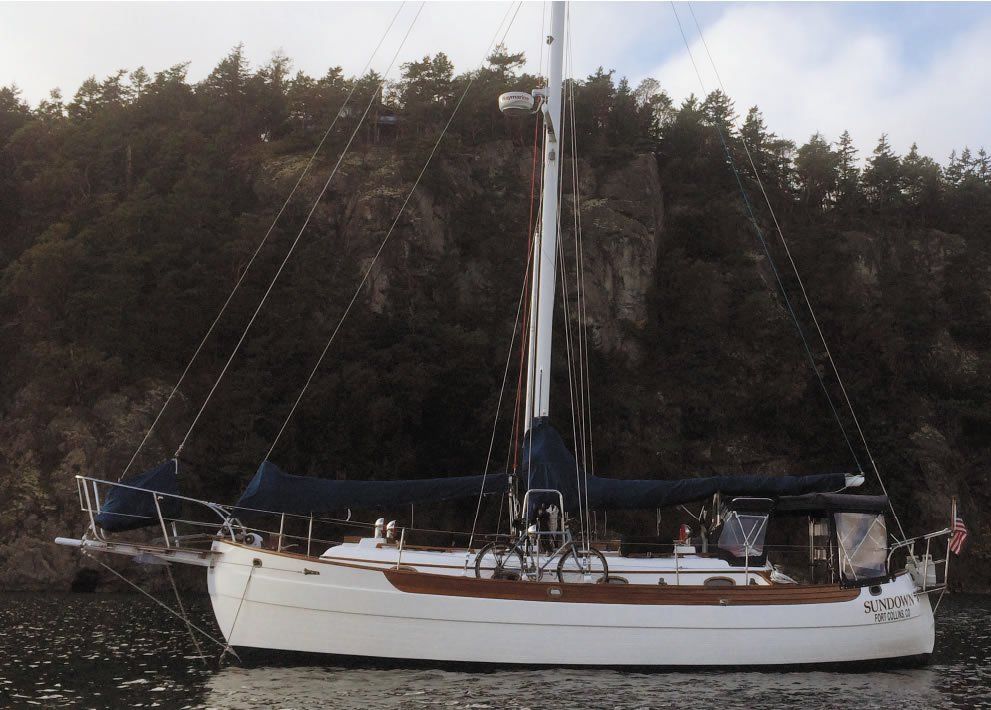Webasto heater
We recently purchased a Webasto Airtop 3900 do-it-yourself (DIY) kit from Defender Industries. The instructions were very comprehensive, and the installation and product work exactly as they should, which typically would lead me to recommend this as a great DIY product. The issue, however, came when we tried to register the product for warranty.

We contacted Webasto directly and were told they will not warranty non-licensed installations on these products. If we had known this before purchasing and installing the $3,000 Webasto heater, we would have re-thought our purchase as we question the integrity of a company that is unable to back their product from manufacturer defects should they arise.
We ended up paying a certified Webasto installer to inspect the installation, which cost us more money and time, and seemed unnecessary for a DIY product.
We also suggested to Defender that they note this in the product description on their website so other customers are aware they will void any warranty by installing it themselves. In response, Defenders director of purchasing contacted us and said the unit we purchased should not require any type of inspection for warranty registration; he contacted Webasto on our behalf and registered our product. Plus, Defender is going to credit our account with the amount we spent to get the installation inspected. Now thats great customer service!
Clay Young and Kim Sharpe
Sundown, Hans Christian 33t
Fort Collins, Colo.
It seems Webasto has changed its warranty policy on some of its new products (including the DIY kits) and now requires that DIY installs for these products be inspected by a certified technician/dealer before they will be warranteed. (Your kit was not one of these new products.) We recommend that anyone considering buying and installing a Webasto product first contact the manufacturer directly to find out whether a DIY installation would be covered by the warranty.
Sail drive vs. Shaft drive
I saw a number of boats at the Annapolis boat show this year that had saildrives rather than shaft drive. Some were over 50 feet in length, and that surprised me. Has PS ever published an article on the benefits/drawbacks of saildrives in boats this size? Is there any difference worth noting? Ive never really considered them because they were usually in smaller boats.
Rick Fricchione
Black Diamond,
Hylas 49-057
Portsmouth, R.I.
Weve published a few short articles (see PS Advisor, January 2006 and June 2004) on shaft- versus saildrives (a generic term that refers to sailboat outdrives from various makers), but a more in-depth look at the pros and cons is upcoming. The biggest advocates for saildrives seem to be production boatbuilders who love the hours saved in installation efforts. For the boat owner, there are upsides to having a saildrive; however, in our opinion, the long-term downsides tip the scale toward a traditional drive train, especially on cruising boats.
Some advantages of saildrives are a reduction in vibration (quieter running), fixed alignment and versatility in engine placement, and less underwater drag (thus their appeal to racers). Theres also a certain propulsion efficiency in the saildrive, because the thrust is parallel to the boats waterline, whereas the downward angle on a standard shaft means that some of the propellers thrust is wasted.
The downsides to saildrives include their predisposition toward corrosion problems (they are made of aluminum and susceptible to galvanic corrosion) and maintenance issues, not to mention the large hole that must be cut in the boats hull to accommodate the unit. Saildrives-and their protective zinc anodes-need to be monitored and carefully maintained. However, neither zincs nor a galvanic isolator will provide adequate protection against a bad case of stray current.
Simrad 4G vs Halo radar
After two years and many hundreds of hours spent inshore and offshore while depending on my Simrad 4G broadband radar in the rain, fog, and dark, I read the PS Simrad Halo radar review (PS October 2015) with great interest. As a fisherman, I see a big advantage to the systems ability to detect birds, but do sailors care about bird detection? The ability to mask certain parts of the antennas view certainly sounds great for mast-mounted antennas.
My 4G has a low-windage, snag-free, dome antenna that weighs 16.3 pounds, less than a third of the Halo 3-foot arrays 52 pounds. Like the Halo unit, the 4G wakes up quickly, does not have a magnetron, and has very low 18-watts at 12-volt power consumption. Because of the dome antenna housing, the radars power consumption does not increase with wind speed. (And thank goodness, it does not have blue LED mood lighting.)
The 4G unit also offers beam sharpening and adjustable target separation, transmits multi-frequency pulses, has faster antenna rotation speeds at a range of one mile or less, and has excellent target discrimination within 20 to 50 feet of the antenna, all at approximately half of the three-foot Halo models $4,500 price.
We depend on the 4G radar when we running offshore at 35 knots. Would I like to have the Halos 48-nautical-mile range and bird detection features versus the 4Gs claimed 24-nautical-mile range, limited weather detection, and inability to detect birds? Of course, but I fish inshore and offshore in a powerboat.
I know some sailboats can run as fast as my powerboat, but I suspect many PS readers boats are much slower, suggesting that close-in target detection is a more practical concern than maximum range or bird detection. I think saving a few thousand dollars on the radar antenna by purchasing a 4G system and then spending the savings on a bigger display would better serve many of your readers.
Bruce Pfund
Nomad, 26-foot Regulator
Westerly, R.I.
Excellent point. We reviewed the 4G and its predecessor, the 3G, in the December 2012 issue. In the end, testers recommended both the $2,300 4G and the $1,500 3G for many of the features you listed.
Tidal Semantics
In response to the Sept. 23, 2015 Waypoints e-letter: Your essay and description of the tidal stream is accurate and useful, in all respects but one: Its not a tidal stream that you write of. Youre describing the influence of current, specifically tidal current.
To clarify: Tide refers to the rise and fall of water level in a particular place; the tide rises to high or falls to low. Current refers to the horizontal flow of water. Along our coasts, we find ocean currents (e.g., the Gulf Stream), river currents (e.g., the Hudson and Connecticut), and tidal currents (such as those in Long Island Sound). In LIS, the tidal current floods (to high tide) or ebbs (to low tide) every 6 hours and 12 minutes, approximately, with brief periods of slack water during the interims.
More complete and detailed descriptions are readily available in Eldridge, Bowditch, and other reference works, including the Internet.
Yes, its all about semantics, I agree, and its a common misconception. But lets try to teach and explain to those who would like to understand such phenomena.
Capt. Bernie Weiss
Connecticut Compass,
Atlantic Yacht Delivery
DeLorme weather
In regard to your review of the DeLorme inReach Explorer (PS February 2015): I have used the DeLorme inReach SE on multiple boat deliveries from the East Coast to the Caribbean. A new service by Ocens (www.ocens.com) provides 160-character, condensed weather conditions texts for any Lat/Lon that you choose. It will also send you the NOAA GRIB forecast for that Lat/Lon, either 24, 48, or 72 hours, depending on what monthly fee you pay ($6 for 24 hours, $7 for 48 hours, and $8 for 72 hours). This has a cost currently of $6 to $8 per month and does not require contract subscriptions. I only activate it when I need it.
Mark Hemstreet
Via www.practical-sailor.com
Back to PS
I read your every issue while we dreamt of cruising, while we bought our boat, and while we refit the boat. When we left to go cruising, I kept the subscription to pick up every six months when we would visit family. Once we headed across the Pacific, I thought I was well informed enough and no longer needed the subscription. Well, that was pretty arrogant!
A couple months ago, we were able to get the last few months of our subscription, and they were great. The articles on keeping fuel clean and dry when storing it in the tank for a long time and the one on fuel-vent dryers were just what we needed now that we sail huge distances without the engine running. I need to add the air dryers to my shopping list … and I need to get my subscription back!
Bill, Lara and Isobel Calfee
S/V Sunrise
French Polynesia


































